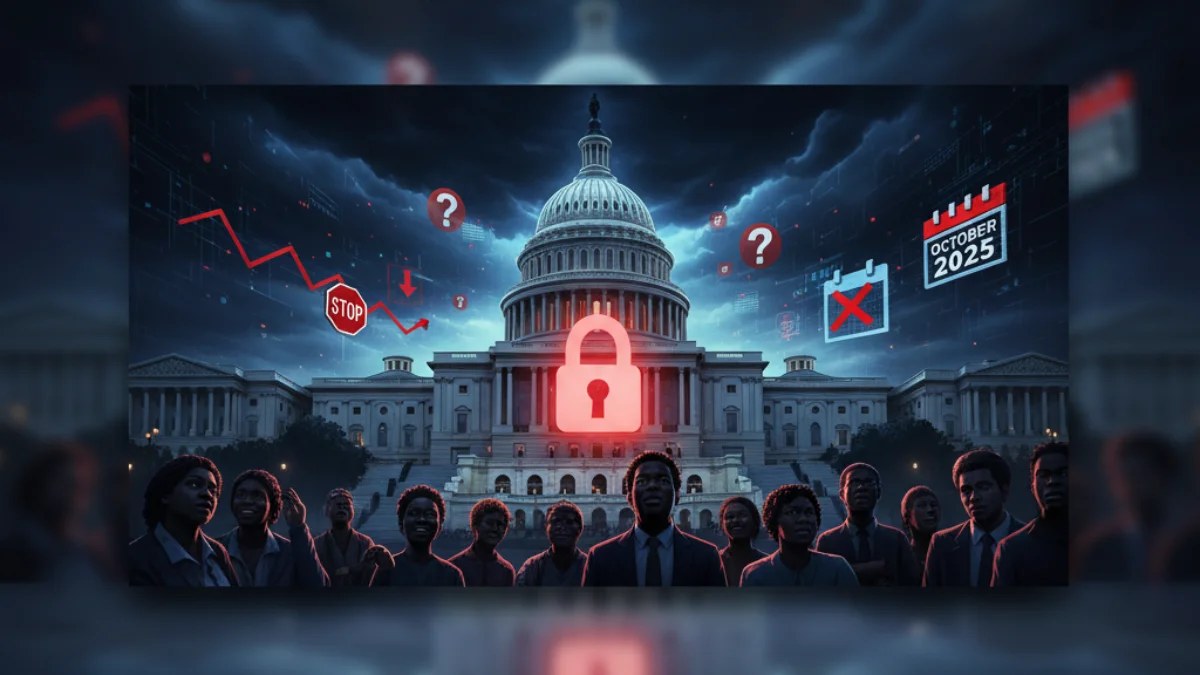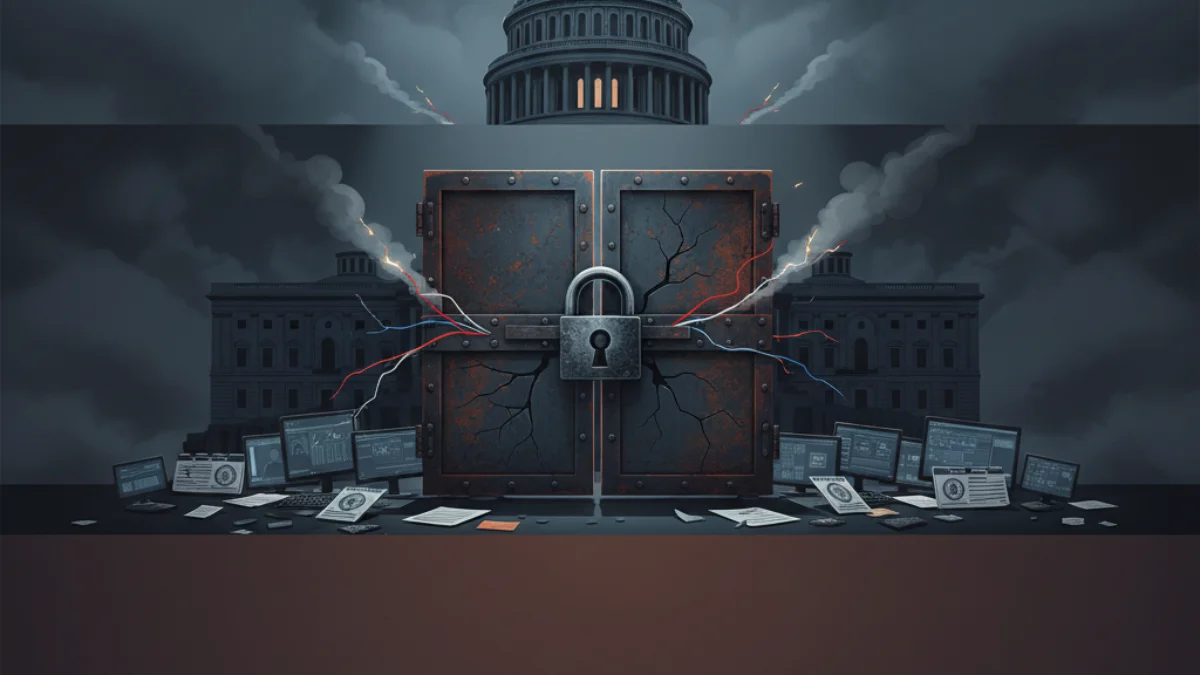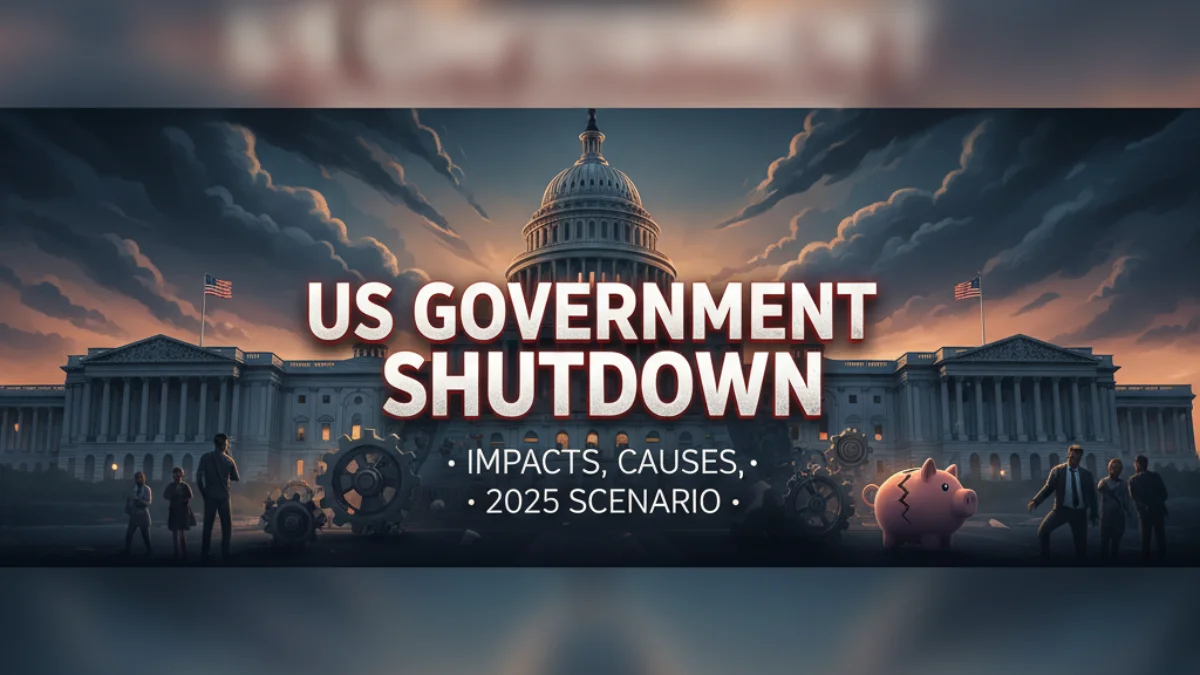Introduction:
The United States government shutdown, a political standoff that disrupts federal operations when Congress cannot agree on funding, became a harsh reality at midnight on October 1, 2025, following the Senate's failure to pass competing spending bills on September 30. Triggered by Democratic insistence on extending Affordable Care Act (ACA) tax credits set to expire at the end of 2025 and Republican demands for no additional spending without cuts, the impasse has furloughed over 2 million civilian employees and halted non-essential services, from national park closures to delayed IRS refunds. This marks the 22nd shutdown since 1976, the first under President Donald Trump's second term, and potentially the most contentious yet, with Trump blaming Democrats for holding "government funding hostage" while Senate Minority Leader Chuck Schumer accuses Republicans of risking services for political gain.
Shutdowns occur when the 12 annual appropriations bills or a continuing resolution (CR) to extend funding are not enacted by the fiscal year's end on September 30, forcing agencies to classify operations as "essential" or "non-essential" under the Antideficiency Act. Essential functions, like military pay and air traffic control, continue with unpaid "excepted" workers, but non-essential activities grind to a halt, affecting everything from passport processing to scientific research. The 2025 shutdown, projected to cost $1-2 billion per week in lost productivity and delayed services, disproportionately impacts vulnerable groups like veterans awaiting benefits and farmers reliant on USDA loans. Why does this matter? Beyond immediate disruptions, prolonged shutdowns erode public trust, strain the economy, and highlight congressional dysfunction, with historical precedents like the 35-day 2018-2019 shutdown costing $11 billion. This article explains the mechanics, causes of the 2025 shutdown, immediate impacts, historical context, expert analyses, and potential resolutions, drawing from CNN, Reuters, and The Guardian as of October 1, 2025.Trump hikes tariffs on heavy trucks, pharma and kitchen cabinets
What is a Government Shutdown? Mechanics and Legal Basis
A government shutdown halts non-essential federal operations when discretionary spending about 30% of the $7 trillion annual budget is unfunded, per the Congressional Budget Office. The Antideficiency Act (31 U.S.C. § 1341) prohibits spending without appropriation, requiring agencies to furlough "non-excepted" employees and pause activities not vital to life, property, or national security.
- Essential vs. Non-Essential: Excepted workers (e.g., 1.4 million in defense) continue unpaid, backpaid post-shutdown; non-excepted (e.g., 800,000 in 2018) are furloughed.
- Duration: From hours (1995) to 35 days (2018-2019).
- Funding Types: Discretionary (shutdown-prone) vs. mandatory (Social Security, Medicare unaffected).
The Office of Management and Budget (OMB) guides classifications, with agencies like HHS furloughing 32,000 of 80,000 staff.
Causes of the 2025 Shutdown: Partisan Impasse
The 2025 shutdown stems from failed negotiations over a continuing resolution (CR) to fund through November 21, 2025:
- Democratic Demands: Extend ACA tax credits expiring December 31, 2025, preventing premium hikes for 21 million Americans, disproportionately in red states.
- Republican Resistance: Insist on no new spending without cuts to "Democrat things," per Trump, tying it to border security and efficiency.
- Senate Vote: On September 30, a Republican CR failed 48-52; Democratic alternative 45-55, per CNN.
House Minority Leader Hakeem Jeffries accused Republicans of "holding funding hostage," while Senate Majority Leader John Thune blamed Democrats. Trump's influence, via Truth Social, escalated rhetoric.
Immediate Impacts: Services Disrupted
The shutdown, effective 12:01 AM ET on October 1, 2025, affects:
- National Parks/Smithsonian: Closed, per NPS; 400+ sites impacted, costing $76M/day in 2018.
- IRS: Delayed refunds, audits; no new stimulus checks.
- HHS/FDA: Furloughs halt 32,000 staff; food safety monitoring paused, per contingency plans.
- Air Travel: FAA delays possible; TSA essential but strained.
- Social Security/Medicare: Benefits continue, but new claims delayed.
- Economy: $1-2B/week loss, per CBO; 2018 cost $11B.
Veterans (9M affected) and farmers face loan delays, per NBC News.PM Modi Welcomes Trump’s Gaza Plan as Viable Pathway to Peace
Historical Shutdowns: Patterns and Lessons
Since 1976, 21 shutdowns totaled 105 days:
- Shortest: 1 day (2013).
- Longest: 35 days (2018-2019, border wall dispute).
- Most Frequent: 9 under Reagan (1981-1989).
- Costliest: 2018-2019 ($11B).
Bipartisan CRs usually resolve, but polarization prolongs, per Al Jazeera.

Expert Analyses: Political and Economic Views
Chuck Schumer: "Republicans' shutdown over health credits hurts millions." JD Vance: "Democrats hold funding hostage; time for compromise." CBO: "Each week costs $1-2B in productivity." Consensus: Bipartisan deal needed; Trump leverage key.
Potential Resolutions and Outlook
Resolutions: Bipartisan CR by October 6 (House vote October 2). Prolonged shutdown risks midterms backlash. Outlook: 80% chance of resolution by October 15, per Polymarket.

Conclusion: Shutdown's Shadow Looms
The October 1, 2025, US government shutdown, born of funding disputes, disrupts lives and costs billions, echoing past stalemates. As talks intensify, hope for swift resolution monitor CNN or Reuters for updates on nuvexic.com.
FAQ
Q1-What causes a US government shutdown?
A shutdown happens when Congress fails to pass appropriations bills by the fiscal year-end (September 30), leaving discretionary spending unfunded; in 2025, it's due to Democrats tying funding to ACA tax credit extensions and Republicans refusing without spending cuts, leading to Senate votes failing 48-52 and 45-55 on September 30.
Q2-What services are affected?
Non-essential services halt, including national park closures (400+ sites), IRS refund delays (millions impacted), NIH research pauses, and passport processing slowdowns, while essential functions like military operations, air traffic control, and Social Security payments continue with unpaid excepted workers who receive back pay post-resolution.
Q3-How many employees are furloughed?
Over 2 million civilian federal employees are affected, with 800,000 on unpaid furlough (non-excepted) and 1.4 million excepted workers continuing without pay, as in the 2018 shutdown, potentially lasting weeks and causing economic strain estimated at $1-2 billion per week in lost productivity and services.
Q4-What is the economic cost of the 2025 shutdown?
The shutdown is projected to cost $1-2 billion per week, totaling $11 billion if it lasts 35 days like 2018-2019, impacting GDP through delayed payments, reduced consumer spending, and halted federal contracts, with airlines warning of flight delays and the Labor Department suspending unemployment reports.
Q5-How long might the 2025 shutdown last?
It could resolve in days via a bipartisan CR, as in 1995 (1 day), or extend to weeks like 2018-2019 (35 days) if partisan demands persist, with Polymarket odds at 86% for at least one week, influenced by the midterms and Trump's leverage, potentially ending by October 15 with a compromise on ACA credits.

